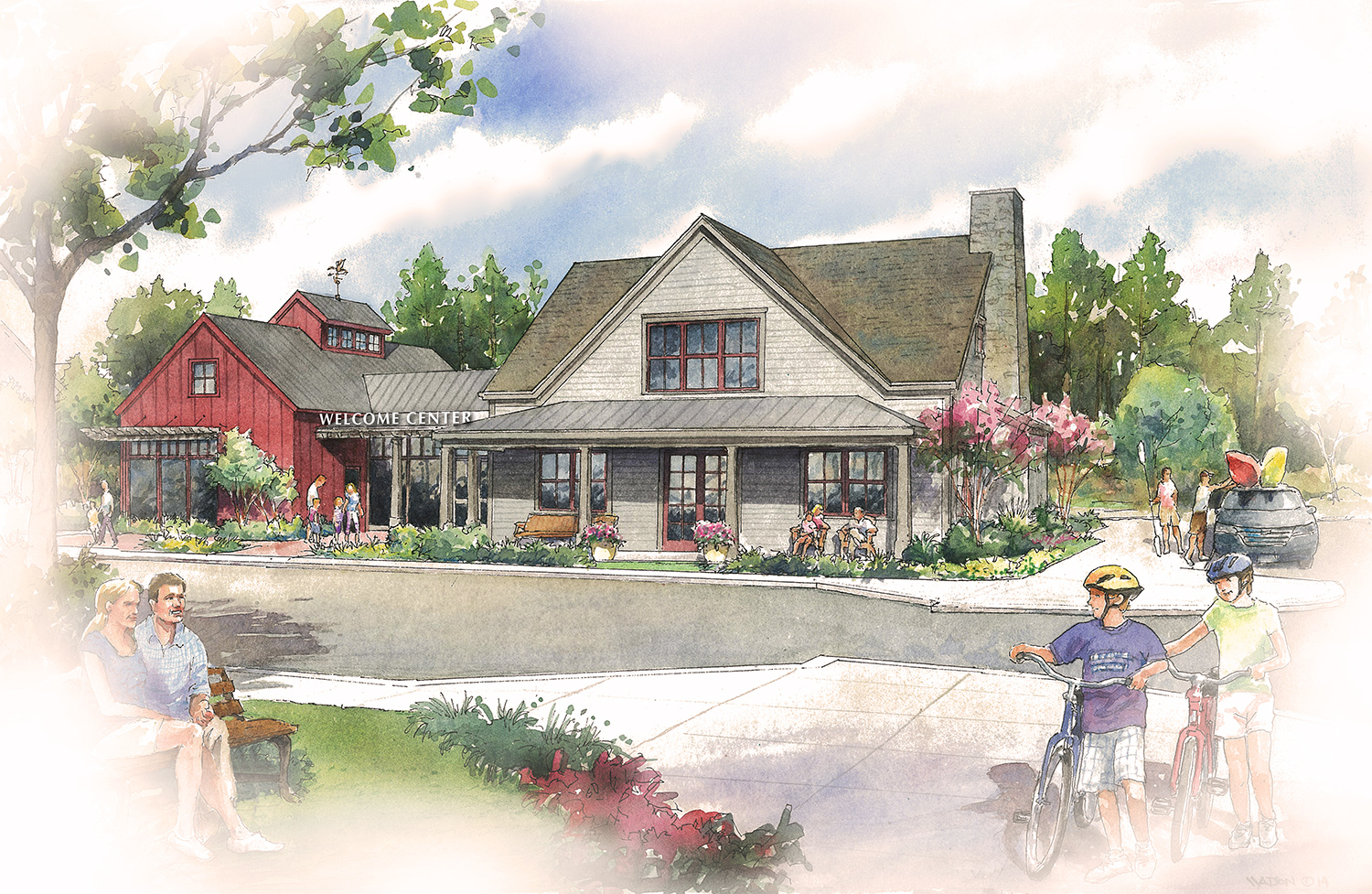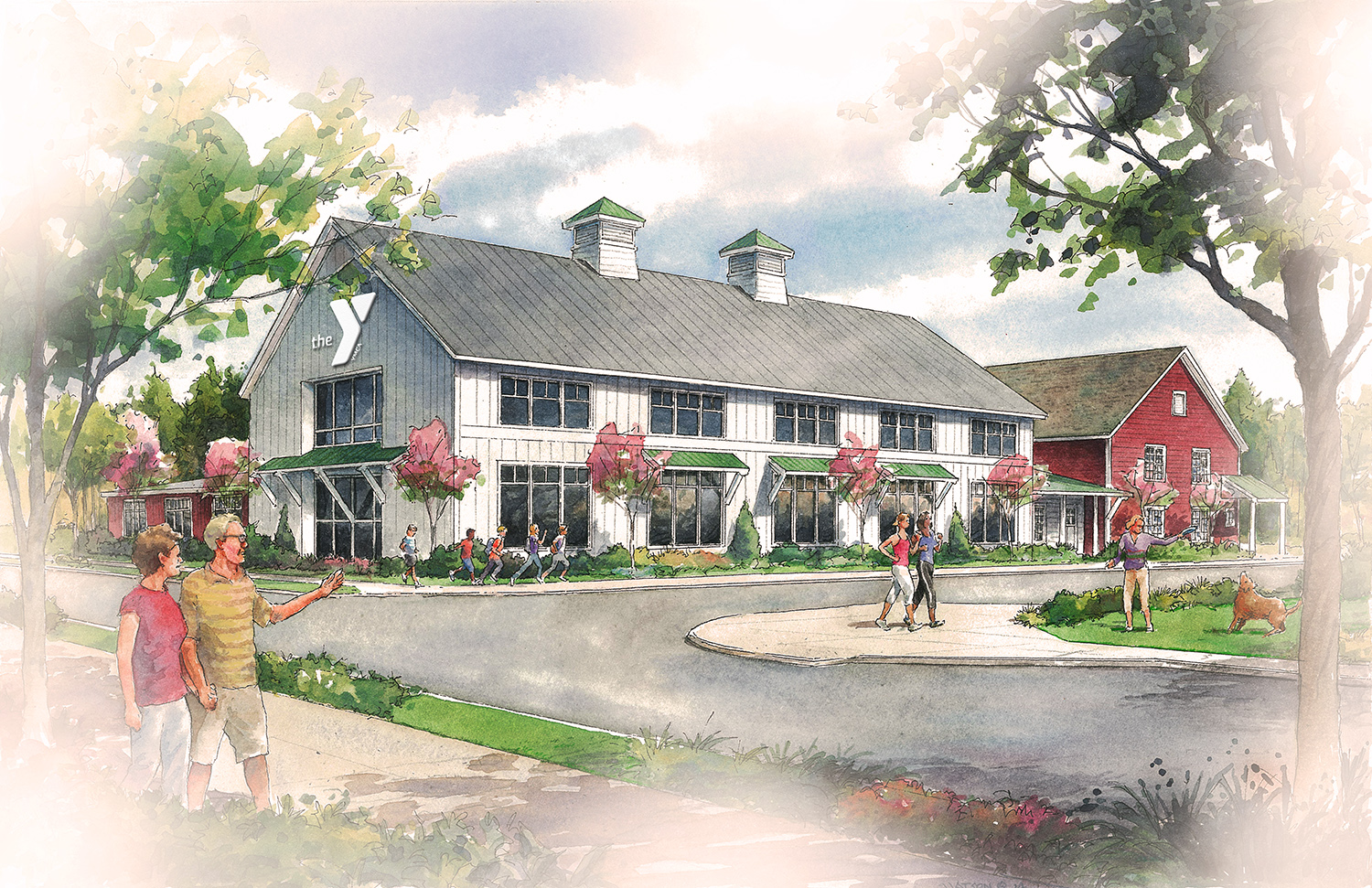by Michael Hogan
Keeping up with changes in how we live our lives has always been one of the biggest challenges for the development community
From the small post-World War II subdivisions, to the 1980s’ attempts to preserve open space through three-acre chunks of manicured lawns, to the “McMansions” of the 1990s, to the 2000s’ return to multifamily housing with proximity to transportation hubs – we’ve always had difficulty trying to fit a wide range of buyers into a small range of options. The result has often been artificially homogeneous groupings of homes that are called “neighborhoods,” but are rarely communities.
What we’ve been looking for is a way to replicate the organic growth of a village, with the diversity and comfort of a small town center, all in one place. This traditional neighborhood development concept is finally taking hold.
A New England example of this is Redbrook, the A.D. Makepeace Company’s new community in South Plymouth, with groundbreaking planned this spring for the first two neighborhoods, the meeting house, the village green, and village office and retail space.
Interestingly, Redbrook is not the only example of a true village approach in the town the Pilgrims founded nearly 400 years ago. On the other side of Route 3, Exit 3, our friends at The Pinehills advanced the notion of a mixed-use New England village in New England, introducing the concept to the town in 1997.
It’s no coincidence that our 2,000-acre Redbrook and the Pinehills’ 3,000 acres coexist in what is, by far, Massachusetts’ largest municipality. Because the biggest challenge in creating a modern version of a traditional village is the space to fit the different elements comfortably.
The outdoors is of utmost importance at Redbrook, because the village is designed to appeal to a variety of buyers – and renters, and business owners – whose common interest is the environment around them. The dozen neighborhoods of Redbrook will be connected to the Village Center, and each other, through a network of walking trails. The Agawam River, meandering alongside historic Makepeace cranberry bogs at the edge of Myles Standish State Forest, creates a nearly unbroken kayak trek into Buttermilk Bay.
The profiles of people who will find this village appealing is striking, and their housing needs are diverse. Empty-nesters want maintenance-free living with plenty of space and privacy for when the grandkids come to stay. Young couples want to be able to walk to the coffee shop, and drive to work in Boston. Parents want a quick workout at our full-service YMCA before walking home from the after-school program with their children. Our village can accommodate them all, in much the same way traditional neighborhoods did a century ago.
At Redbrook, we will integrate not only a wide variety of housing types, along with commercial uses, but we are introducing an agricultural element as well. The A.D. Makepeace Company is one of the world’s largest cranberry growers, and some of our most scenic and productive bogs are located within Redbrook. We have experience with this integration in a manner that enhances both property values and quality of life. We envision homeowners relaxing on their deck, gazing out over bright red berries floating in a flooded bog, or walking the trails along the farm on the way to the river.
In Plymouth, town meeting voters have been up to the challenge of thinking about how their zoning regulations shape their town, and their lives. Take a look at your own town’s zoning code and you will likely find prohibitions against retail stores in residential neighborhoods, some three-acre zoning, acres of required parking around commercial space, and oversized subdivision street layouts. These factors have made our communities less and less walkable and less environmentally sustainable. Plymouth officials and voters saw a way around that and endorsed plans that will channel development into places that are like traditional villages, only better.
More other communities are beginning to look differently at the way zoning shapes their futures, and many of us in the development community agree: It’s time to build communities that truly capture the rhythms of our lives.
Michael Hogan is president and CEO of The A.D. Makepeace Company












